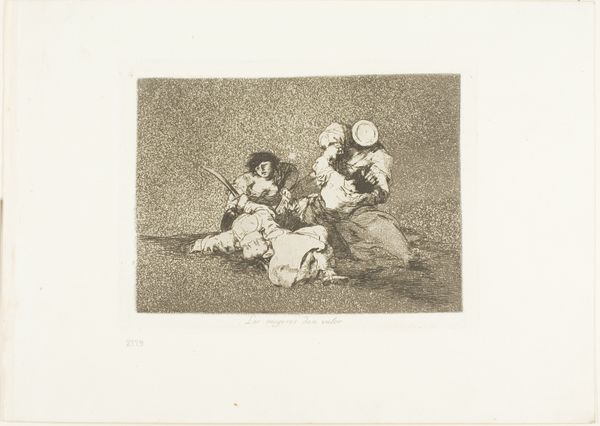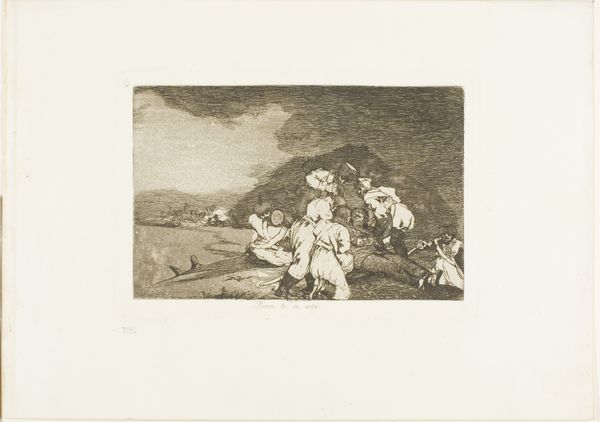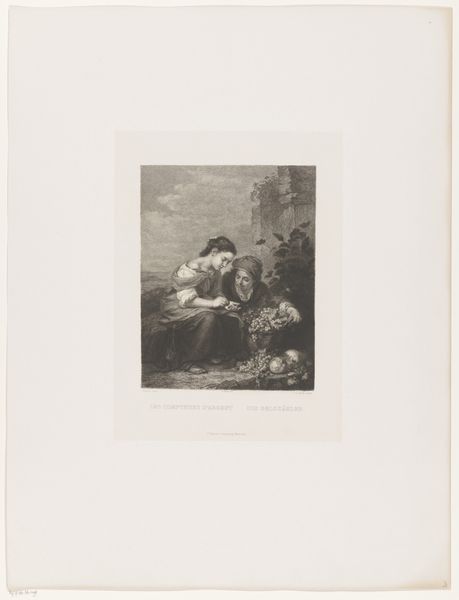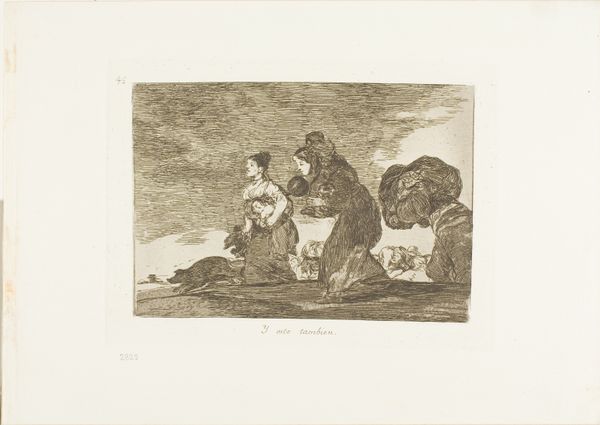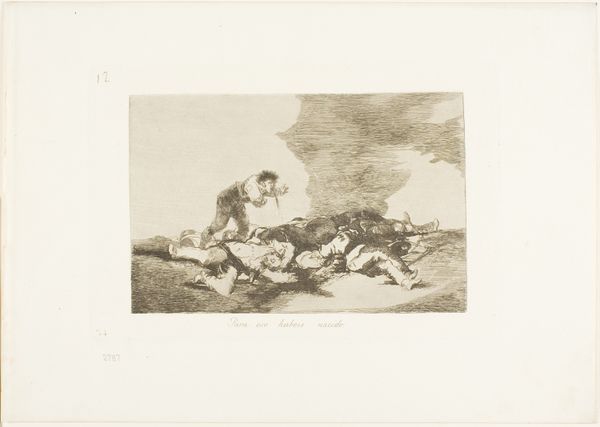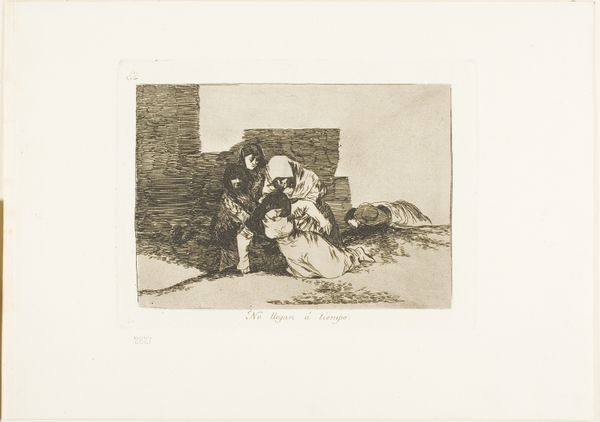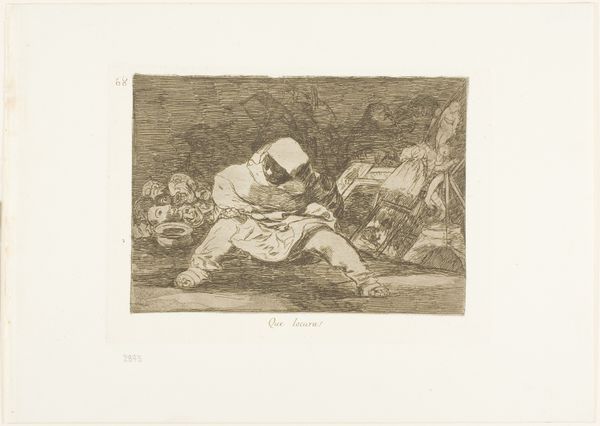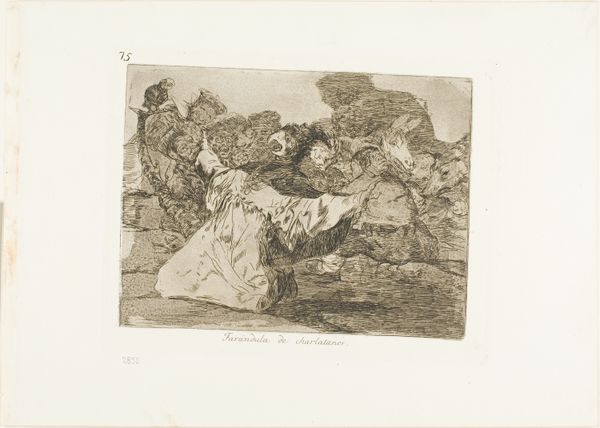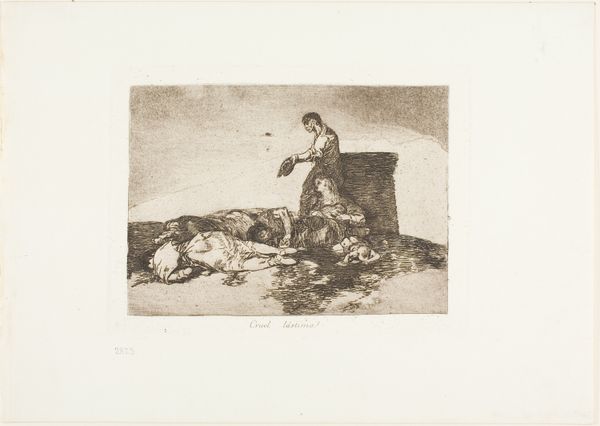
What is the Use of a Cup?, plate 59 from The Disasters of War Possibly 1812 - 1863
0:00
0:00
drawing, print, etching
#
drawing
#
narrative-art
# print
#
etching
#
war
#
figuration
#
romanticism
#
history-painting
Dimensions: 127 × 180 mm (image); 150 × 205 mm (plate); 240 × 339 mm (sheet)
Copyright: Public Domain
Curator: Good morning. Today we’re looking at plate 59 from Francisco de Goya’s *The Disasters of War*, a series of etchings, titled, "What is the Use of a Cup?". This piece resides here at the Art Institute of Chicago, and was likely created between 1812 and 1863. Editor: The initial impression is stark. There is an immediate feeling of desolation rendered through what appears to be a minimal composition. It is incredibly affecting. Curator: Goya's work here is striking for its raw emotional power, achieved through stark contrasts and dynamic lines. Note the figures huddled together; the tangible manifestation of their suffering is created via Goya's conscious manipulation of light and shadow to emphasize the figures’ skeletal forms, drained of life. Editor: The cup held by the figure in the background looms large, almost an icon of futility and helplessness. It’s reminiscent of earlier Christian symbols, particularly in how the background figure extends her hands—recalling images of mercy and saintly ministry amidst devastation. The implication here is deeply pessimistic though; the hope associated with these earlier images is obviously gone. Curator: Absolutely, this particular print utilizes form to intensify the theme of despair, specifically through its deployment of emptiness. Observe how Goya employs severe tonal gradations, focusing on an almost brutal simplicity that conveys the abandonment. Notice that the human figures comprise but a small fraction of the image. This creates negative space that amplifies the vast desolation in which this scene transpires. Editor: In considering Goya’s recurring symbols of famine and the visual allusions to mercy, one cannot help but imagine him wrestling with themes of failed compassion, the inadequacy of sustenance, and the disruption of foundational communal beliefs by the relentless cycle of conflict. Curator: Yes, and structurally, there’s the rough, almost chaotic etching technique itself. Goya uses the physical process to mirror the brokenness and disorder he's depicting. Editor: Reflecting on its historical and symbolic resonance allows one to connect on an empathic level to human calamity—something eternally, sadly, relevant. Curator: Agreed, observing how the composition conveys these thematic anxieties proves invaluable to our understanding.
Comments
No comments
Be the first to comment and join the conversation on the ultimate creative platform.
